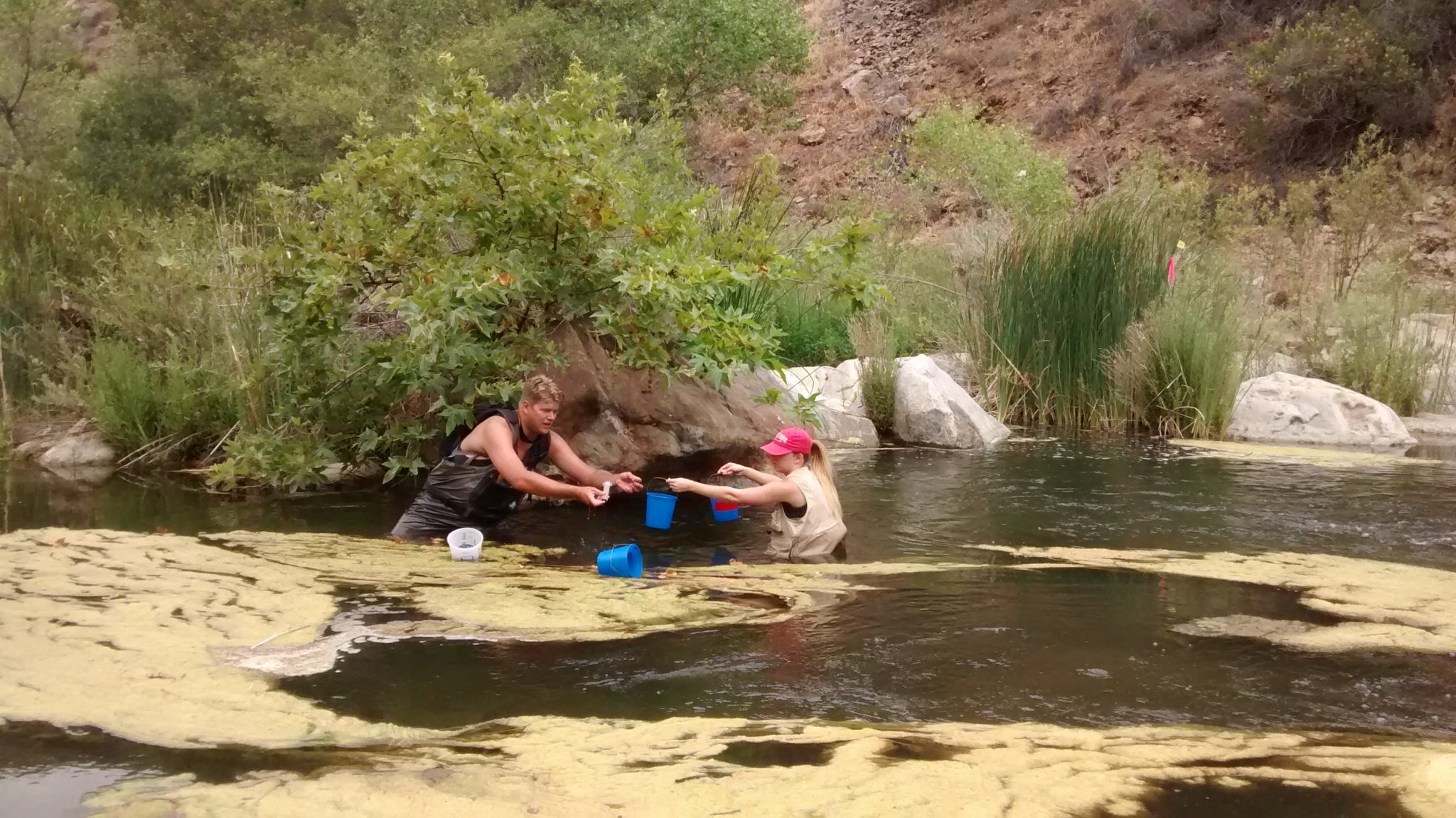Method comparison study seeks to assess utility of using DNA to identify stream algae

SCCWRP and its partners have launched a first-of-its-kind study to determine whether DNA-based methods can reliably be used to identify algae in wadeable streams across California, a finding that could pave the way for the incorporation of molecular technology into stream bioassessment monitoring statewide.
Stream managers across Southern California already use the composition of stream algal communities to evaluate overall water body condition, but these assessments are dependent on trained taxonomists to identify algae samples individually. This manual identification process is labor-intensive, costly and prone to backlogs.
Switching to an algal analysis method that allows algae samples to be identified through DNA sequencing could reduce dependence on a limited supply of algal taxonomists, as well as provide important new insights about novel algae species and their habitats.
In January, SCCWRP and its partners began laying the groundwork to compare the effectiveness of morphology vs. DNA-based algae identification methods. The study is ongoing.
The need for improved stream algae bioassessment methods is growing in California. For the past six years, state water officials have been working to develop a statewide stream biointegrity and nutrient policy that is expected to rely, in part, on algae-based bioassessments.
Algal communities are valuable indicators of human impacts to streams because they are highly sensitive to physical, hydrological and geochemical changes to their environment. Excessive nutrient inputs, for example, can trigger harmful algal blooms (HABs).
Vetting DNA-based algae bioassessment methods also could benefit the state’s Surface Water Ambient Monitoring Program (SWAMP), which is developing an algae-based stream scoring tool comparable to the California Stream Condition Index (CSCI). The CSCI, which was co-developed by SCCWRP, uses aquatic insects and other benthic invertebrates as indicators of stream condition. The statewide algal index is being built to complement the CSCI, providing an additional line of evidence for evaluating stream health.
For the method comparison study, SCCWRP and its partners plan to assess the performance of the DNA-based identification methods across a wide range of geographic and geochemical settings. Algae samples are being collected by the Southern California Stormwater Monitoring Coalition, the San Francisco Bay Regional Monitoring Coalition, the statewide Reference Condition Management Program, and the statewide Perennial Stream Assessment. In addition, the Santa Margarita River – a watershed heavily impacted by nutrient loading – is being sampled to assess method performance through a full algae bloom-and-bust seasonal cycle.
Study findings are expected to be released in late 2017. For more information, contact Dr. Susanna Theroux.
More news related to: Bioassessment, DNA Barcoding, Indices of Biotic Integrity